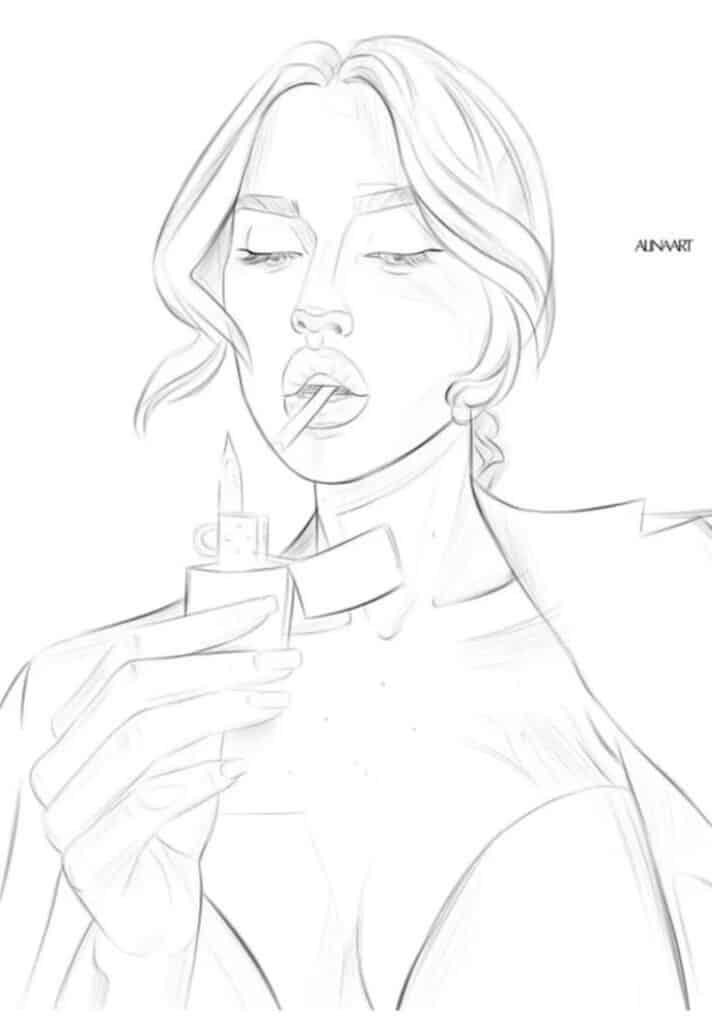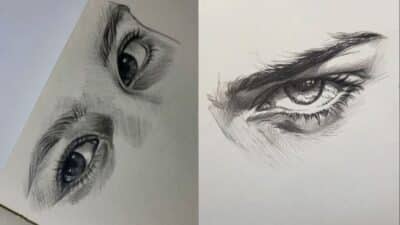Drawing the female form is a fundamental skill for artists seeking to capture the complexity and diversity of human figures. Learning to sketch various body types allows you to create more inclusive and realistic representations in your artwork. Understanding the basic proportions and anatomical structures serves as the foundation for creating compelling female body illustrations that respect the wide range of shapes and sizes that exist.
When beginning to draw female bodies, it’s helpful to start with simple shapes and guidelines before adding details. Many artists use reference images or tutorials that break down the process into manageable steps—from outlining the torso and chest to properly positioning the arms and legs. You can find thousands of royalty-free images and tutorials online to guide your practice and inspire your creativity.
Remember that there’s no single “correct” way to draw the female form, as bodies come in countless variations. Exploring different body types in your drawings not only improves your technical skills but also contributes to more diverse representation in art. Whether you’re sketching for character design, fashion illustration, or fine art, developing this skill opens up endless creative possibilities.
Key Takeaways
- Master basic proportions and anatomical structures first before attempting detailed female figure drawings.
- Use reference images and step-by-step tutorials to break down complex forms into simpler components.
- Practice drawing diverse body types to create more inclusive art and expand your technical abilities.


Understanding Female Body Shape Drawing
Drawing the female form requires understanding anatomical proportions, diverse body types, and how to represent them accurately. Mastery of these elements allows artists to create more realistic and inclusive representations of women.
Key Principles of Body Shape Representation
Proportion is fundamental when drawing female bodies. The typical female figure is approximately 7-8 heads tall, with shoulders narrower than the hips. Pay attention to the waist-to-hip ratio, which creates the characteristic curves.
Balance is crucial – even stylized drawings need anatomical accuracy. Consider the skeleton underneath the form to ensure poses look natural rather than awkward.
Movement and weight distribution affect how the body appears. When a woman shifts her weight to one leg, the hip on that side elevates while the opposite shoulder drops to maintain balance.
Foreshortening techniques help create depth in your drawings. Body parts closer to the viewer appear larger, while those further away seem smaller.


Popular Body Shape Types
Hourglass: Features balanced shoulders and hips with a defined waist. This classic shape has proportional bust and hip measurements with a significantly smaller waist.
Pear/Triangle: Characterized by hips wider than shoulders, creating a tapered silhouette from bottom to top. The waist is typically well-defined but less dramatic than in hourglass figures.
Rectangle: Shows similar measurements at shoulders, waist, and hips with minimal curve definition. This athletic build often has a straighter silhouette.
Inverted Triangle: Displays broader shoulders compared to narrower hips. Often seen in athletic body types with well-developed upper bodies.
Apple/Round: Carries weight primarily in the midsection with relatively slender legs. The waist is less defined, with fullness concentrated in the torso.
Remember that real women often combine elements of multiple shape categories.
Common Mistakes in Drawing Female Bodies
Exaggeration of features is a frequent error. Overly emphasized curves, impossibly thin waists, or anatomically incorrect proportions create unrealistic representations that perpetuate harmful beauty standards.
Identical body types across different characters show lack of diversity. Varying your characters’ builds creates more interesting and inclusive artwork.
Rigid posing makes figures appear stiff and unnatural. Female bodies, like all human forms, have fluidity and asymmetry in natural poses.
Poor understanding of muscle structure leads to flat-looking drawings. Even when drawing clothed figures, knowing the underlying musculature helps create volume and dimension.
Neglecting age-related differences is problematic. Body shapes change throughout life stages, affecting proportions, skin elasticity, and muscle tone.


Essential Techniques and Tools
Creating accurate female body shape drawings requires both fundamental techniques and appropriate tools. Mastering these elements will help you develop realistic proportions and dynamic poses in your artwork.
Sketching the Basic Outline
Begin your female figure drawing with simple geometric shapes to establish proper proportions. Use a pencil with medium hardness (HB or 2B) for your initial sketch, allowing for easy corrections. Start with two boxes representing the ribcage and pelvis as your foundation.
Draw an oval for the head, then add a line for the spine connecting these primary elements. The female form typically has shoulders narrower than hips, unlike male figures. This fundamental difference is crucial to capture accurately.
For body type variations, adjust the width and positioning of hips, waist, and shoulders. Remember that female bodies come in diverse shapes—pear, hourglass, rectangle, and apple being common classifications.
Practice using gesture lines to establish movement and flow before adding detailed anatomy. Quick 30-second sketches can help you develop an intuitive understanding of female body proportions.
Using Vectors and Digital Tools
Digital drawing offers powerful advantages for creating female body illustrations. Vector-based programs like Adobe Illustrator allow for clean, scalable outlines that can be easily modified.
When working digitally, use layers to separate your skeleton framework from the detailed figure. This technique lets you adjust proportions without redrawing the entire piece.
Tablet sensitivity settings can dramatically impact your line quality. Adjust pressure sensitivity to create varied line weights that enhance the dynamism of your female body outlines.
Digital color composition tools help you experiment with skin tones and shading. Create a custom palette that includes base tones, highlights, and shadows specific to your figure drawing.
Video tutorials can provide real-time demonstrations of digital techniques. Many artists share their process for creating vector-based female figures with tips on tool selection and workspace setup.


Detailing Silhouettes and Proportions
Female body proportions typically follow the 7.5-head rule, meaning the total height equals about 7.5 times the head length. The waist generally sits at the 3-head mark from the top.
Pay special attention to the curvature of the female silhouette. The female form usually features more pronounced curves at the chest, waist, and hips compared to male figures.
When detailing, use lighter pencil strokes (4H-2H) for subtle contours and darker pencils (4B-6B) for shadows and defined lines. This contrast creates depth in your drawing.
Consider these key female proportion guidelines:
- Shoulders typically align with hip width or slightly narrower
- Waist sits approximately at the halfway point of total height
- Legs often comprise about 4 heads in length
Understanding muscle structure enhances accuracy in your drawings. Even when not explicitly shown, knowing the underlying anatomy helps create natural poses and realistic contours.


Creative Composition and Framing
The way you arrange your female figure drawing on your canvas significantly impacts the overall visual impact and storytelling. Thoughtful composition creates dynamic energy while proper framing emphasizes specific body features or poses that you want to highlight.
Image Orientation: Portrait, Landscape, and Square
Portrait orientation works exceptionally well for full-body female figure drawings, allowing you to capture the entire form with natural proportions. This vertical format provides ample space for elongated poses and dramatic gestures.
Landscape orientation is ideal when drawing reclining poses or multiple figures interacting within a scene. You’ll find this horizontal format creates a sense of calm and stability while offering more space to explore the relationship between the figure and environment.
Square formats create balanced compositions that work particularly well for seated poses or three-quarter views. This orientation forces you to make deliberate choices about how to position the figure.
When selecting your orientation, consider what aspect of the female form you want to emphasize. Portrait highlights verticality and height, landscape emphasizes curves and horizontal lines, while square creates perfect symmetry.
Exploring 360° Panoramic and Panoramic Views
Panoramic views offer exciting opportunities to depict the female form in dynamic motion or multiple poses within one composition. You can show a figure turning, walking, or transitioning through different positions across a wide horizontal frame.
For digital artists, 360° panoramic images create immersive experiences where viewers can observe the female form from any angle. This technique is particularly valuable for character design and reference creation.
When working with panoramic compositions, establish a clear focal point to guide the viewer’s eye. Use color composition strategically—warm colors to bring elements forward and cool colors to push them back.
Try creating a panoramic study showing the same female figure from multiple viewpoints simultaneously. This helps you understand how the body changes from different angles and improves your overall comprehension of anatomy.


Utilizing Reference Images and Licensing
Working with proper reference images is crucial for creating accurate and diverse female body drawings. Understanding licensing requirements protects your artwork from legal complications while ensuring you have access to quality references.
Finding and Selecting Royalty-Free Images
When searching for reference images, platforms like Dreamstime offer extensive collections of royalty-free stock photos featuring diverse body types. These images can be filtered using safe search filters to ensure appropriate content for your artistic needs.
Look for high-resolution images that clearly show the anatomical details you want to study. Many stock photo sites allow you to sort by resolution, helping you find images detailed enough for studying subtle body contours.
You can also find specialized reference packs created specifically for artists. These often include multiple angles and poses of the same model, giving you comprehensive reference material.
Remember to check the licensing terms before downloading. Some “free” images may only be free for personal use, not for commercial art education.
Editorial and Exclusive Usage
Editorial images typically feature public figures or newsworthy events and come with specific usage restrictions. These images cannot be used for commercial purposes, only for educational or informational content.
When using editorial images as drawing references, you must transform them substantially through your artistic interpretation. Simply copying an editorial image could violate its license terms.
Exclusive usage licenses give you unique rights to use an image, which can be valuable if you’re creating instructional materials about figure drawing. This prevents others from using the same reference in competing works.
These licenses tend to be more expensive but provide greater legal protection and exclusivity for your projects.
Extended Licenses and Legal Considerations
Extended licenses offer broader usage rights than standard royalty-free licenses. They typically allow you to incorporate references into products for resale, such as drawing tutorials or art instruction books.
Always read the fine print before purchasing. Some extended licenses have limitations on print runs or digital distribution numbers that could affect your project.
Consider creating composite references by combining elements from multiple licensed images. This approach helps you avoid copyright issues while developing unique figure drawing references.
When teaching figure drawing to others, ensure you have proper licensing for any references you share with students. Educational usage doesn’t automatically exempt you from licensing requirements.
If you’re uncertain about licensing terms, contact the stock photo company directly. Most have customer service representatives who can clarify exactly what your purchased license permits.


Trends and Innovations in Female Body Shape Drawing
The landscape of female body representation in art continues to evolve with technology and changing societal perspectives. Artists now have access to more tools and approaches than ever before to create diverse and authentic depictions.
AI Generated Content and Its Impact
AI tools have revolutionized how artists approach female body illustrations. These technologies can generate reference poses, suggest proportions, and even create complete body sketches based on text prompts. You’ll find these AI assistants particularly helpful when drawing challenging angles or dynamic poses that might be difficult to conceptualize.
Many digital artists now incorporate AI-generated base sketches as starting points, then add their personal artistic touches. This workflow has accelerated the creation process while expanding the diversity of body types represented in art.
The impact extends to learning resources too. AI-curated tutorials analyze your drawing style and suggest specific improvements for anatomical accuracy, making it easier for you to develop your skills in female figure drawing.
Enhancing Drawings with Modern Technology
Digital tablets and specialized software have transformed female body illustration techniques. Apps like Procreate and Clip Studio Paint offer specialized brushes and tools specifically designed for realistic body contours and textures.
3D modeling programs provide rotatable reference figures that let you view the female form from any angle. This technology helps you understand how light interacts with different body shapes and how muscle groups influence surface appearance.
Motion capture technology has entered the artist’s toolkit too. You can now record or access libraries of natural movements to capture more authentic poses in your drawings.
Augmented reality applications allow you to project sketches into physical space, helping you visualize proportions at actual size. This innovation is particularly valuable when drawing fitness-focused illustrations where anatomical accuracy matters.
Social media platforms have created communities where artists share technique videos and body-positive drawing approaches, encouraging more inclusive beauty standards in illustrations.
- 954shares
- Facebook0
- Pinterest954
- Twitter0



